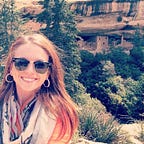Photogrammetry, 3D modeling, and a Learning Curve
Photogrammetry is technique that uses overlapping photographs of an object or site, and creates specific measurements that can then be incorporated into a 3D modeling software. Photogrammetry is a relatively easy process that provides the initial steps in creating 3D modeling. However, just as in many things in life, there can be a bit of a learning curve to the technique and the accompanying programs. I had my first experience with photogrammetry at Tahoka Lake Pasture, in Tahoka Texas. Our goal was to choose a feature of the site to photograph for the creation of a 3D model, and my choice was a 22-foot steel arrow that stands as a marker of the Quanah Parker Trail. The arrow was installed at Tahoka Lake in March 2016.
The arrow is positioned in a way that at first glance seems perfect to achieve a full 360 degrees of photos to use for the modeling process, and snapping photos around the arrow could hardly have been easier. Using a Nikon D7200 camera, I shot 73 photos of the arrow at various angles and depths.
When entering the Museum of Texas Tech’s Digital Heritage Lab, I felt confident that this model would render to near perfection based on the number of dynamic photos I was able to take. While working within AgiSoft PhotoScan software, I felt optimistic that the initial alignment of the photos would provide a great base for the model, however this optimism quickly shifted to apprehension as I began to notice the quality of the sparse cloud. The alignment process of 3D modeling works through the software’s detection of specific pixels from the photos, and aligns these pixels from the 360 view to create the 3D representation of the object. This initial stage of alignment is what provides the model’s sparse cloud. I noticed that my sparse cloud appeared to be missing quite a few sections within the shaft and fletching portions of the arrow, however, I continued in creating a dense cloud hopeful that more of the arrow would be filled in through the dense cloud process.
In 3D modeling, generating a dense cloud further aligns the photos and generates a denser shape that should start to appear closer to a solid model. After generating the dense cloud, I realized the arrow I chose, would be missing very noticeable sections from the shaft and fletching. Understanding this, there were two options available; either continue knowing that the model would hardly appear complete, or return to the original photos and ‘mask’ them using PhotoScan. This process is similar to cropping a photo, and allows you to focus on only the specific parts of the photo you wish to model. While this process was time consuming, after re-running the sparse and dense clouds, I did in fact have a much more complete looking model. After building the model’s texture, the arrow looked much more similar to its’ actual aesthetic, however it still showed issues with texturing the extremely fine and close together individual feathers of the fletching.
What did I learn though this first attempt to create a 3D model? I learned that while a huge portion of the success of any 3D model relies heavily on the amounts and angles of the photos taken, the object itself also plays a major role in how the model will turn out. A mistake I initially made was assuming that since the arrow’s location provided a great opportunity for full 360 photos to be taken around the arrow, I did not factor in the very thin dimensions of the shaft and fletching itself. This made for a model with a background that was more easily detected than parts of the object itself, which in turn made aligning the points of this thin object very difficult. In contemplating how I could have achieved a better first model, I would have not chosen a different object to model, but rather would have acted more diligently in getting close range photos that presented better views of the arrow’s shaft. When using this advancing technology, users should keep in mind that your first few models may not turn out how you intended, however this does not necessary make them a failure. Instead these imperfect models should be considered a learning experience, and in this regard, they are still somewhat a success.
